It’s a good sign when even the pets are happier after a renovation project. Cooper the dog barked a lot in his previous home, reacting to the noises around the terraced house. Now he lies on his owner’s knee, gently snoring.
When you step off the busy road in Drumcondra on Dublin’s northside and open the front door of this house, you can see why he is so relaxed. The choice of materials and the warm colour palette make it an oasis of calm.
“It’s so quiet in here. He’s like a different dog, an unexpected bonus,” says Donal Boyle. He and his partner, Ian McEvoy, bought the 1930s red brick house in 2020. It needed a lot of work so they remained in their home in Finglas until it was renovated. This took longer than expected, thanks to the Covid pandemic. “It was getting to the stage where I was wondering did people just think we’re making it up that we bought the house,” says McEvoy.
They finally moved into the house in late 2022, and it was worth the wait. The small, dark rooms have been replaced by a spacious open-plan design, leading from the front door to the back garden, with a central courtyard bringing in more natural light.
“I think the architect [ODKM] needs to take most of the credit for this,” says McEvoy. “We were a bit of a blank slate and they had some great ideas.”
While the homeowners were looking for inspiration, they knew that they wanted something modern that would also emphasise the house’s good features. “We wanted to keep as much of the character as possible. Everything at the front of the house is original, the doors and windows,” says Boyle. “We repaired the window sashes.” They also kept the original fireplaces in the bedrooms.
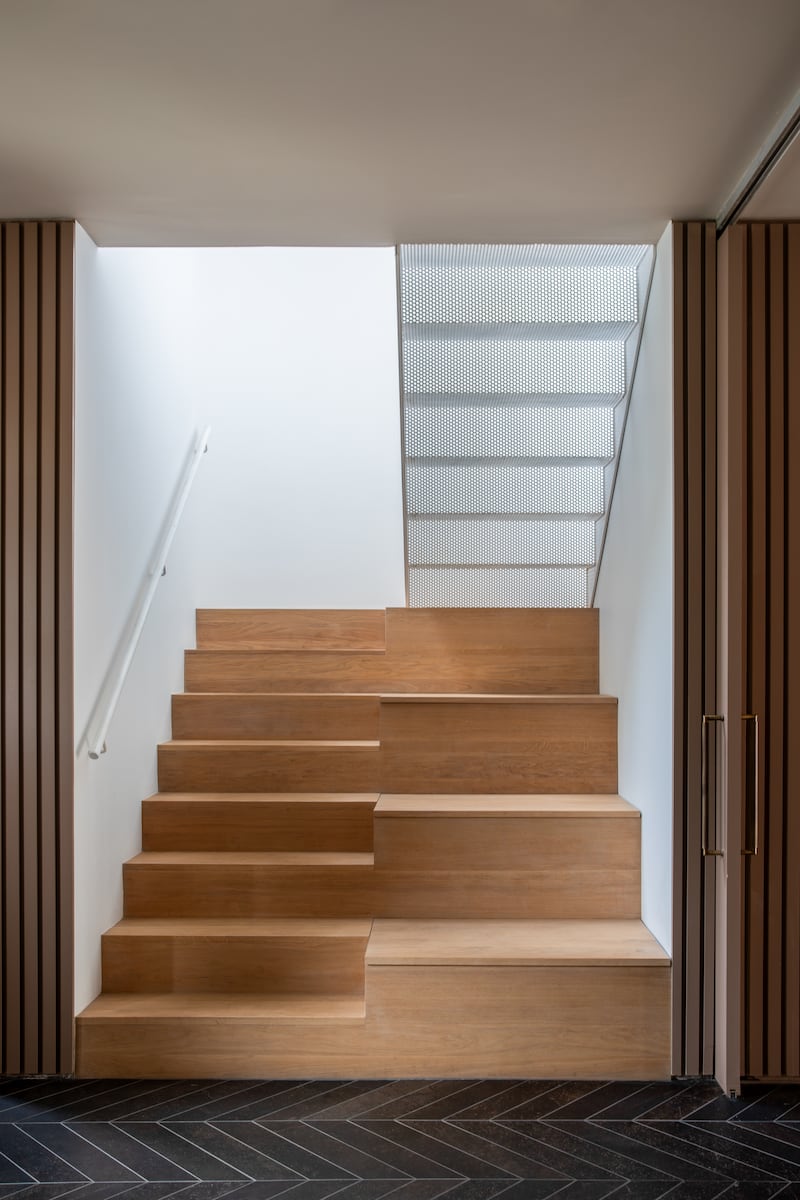
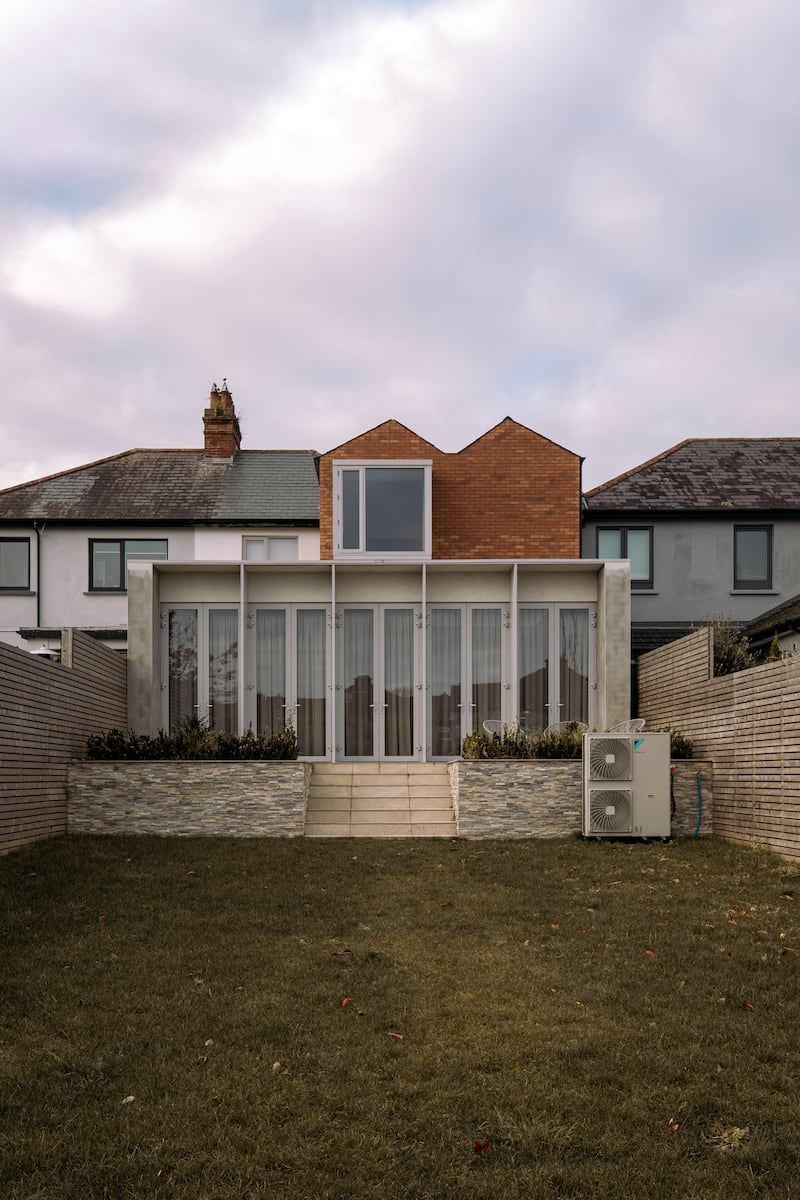
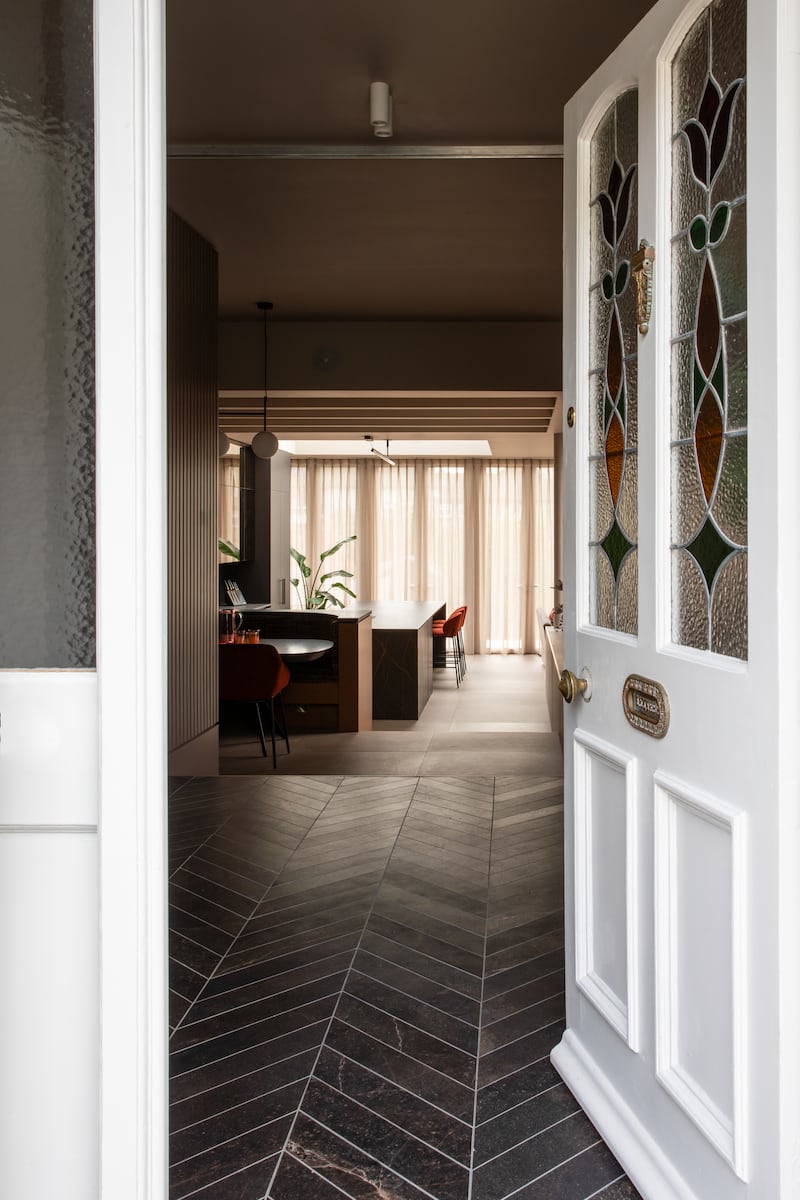
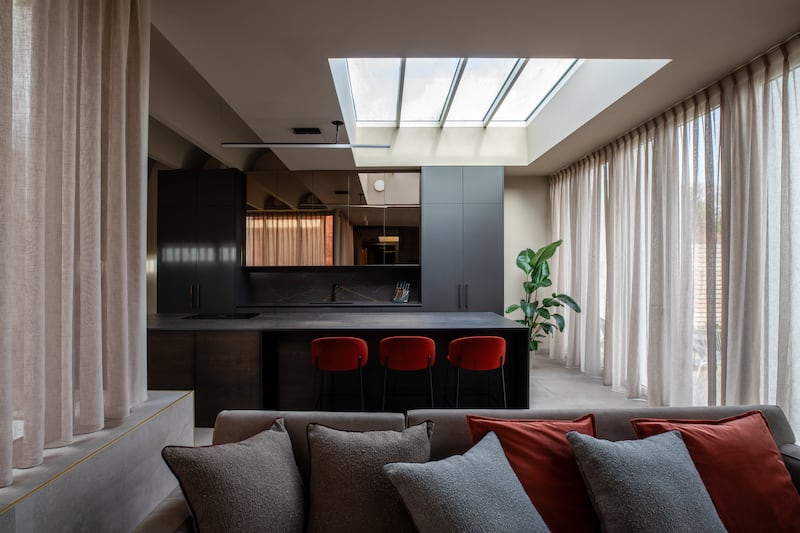
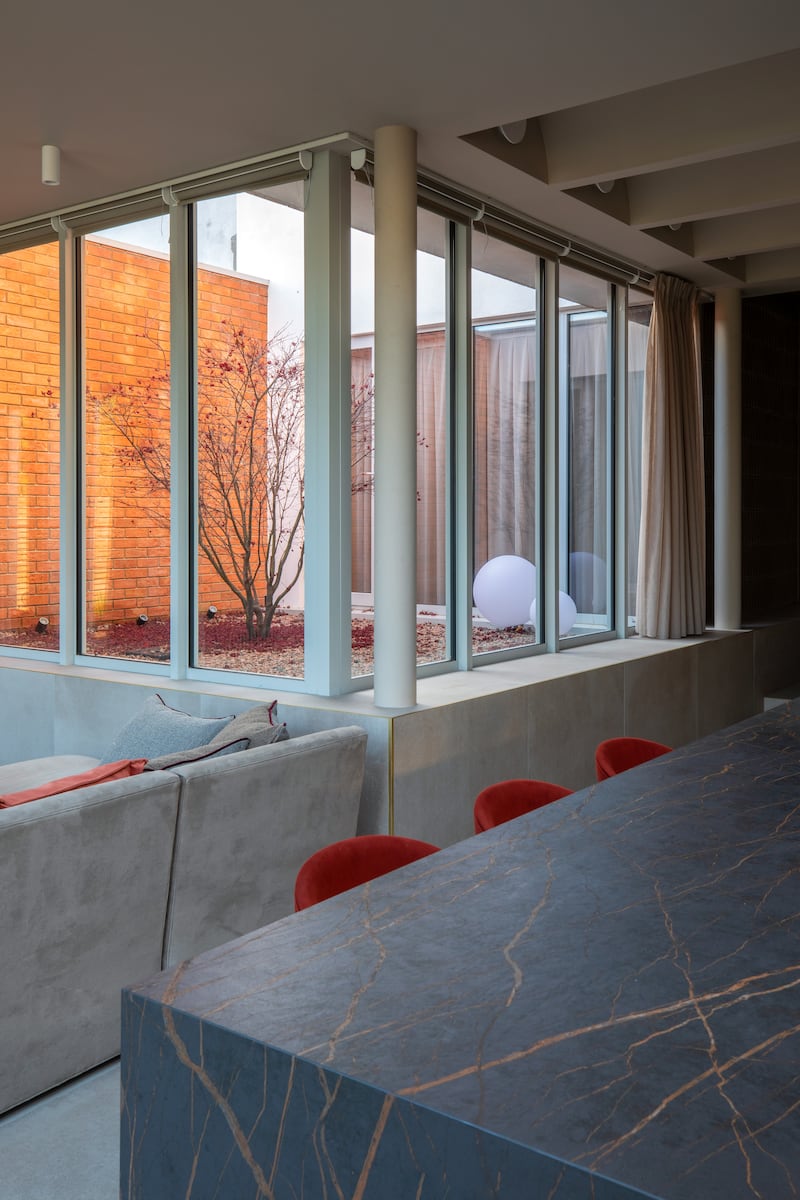
ODKM Architects managing director Barry Kane says the project was all about light, flow and functionality. “The insertion of a central courtyard allowed us to open up the floor plan, and cluster rooms around this newly formed lightwell with an intelligent and efficient plan.”
The stairs are one of the first things to catch your eye when you walk into the house. Boyle was adamant that he didn’t want a traditional staircase. The wooden stairs incorporate generous hidden storage on one side, which also doubles as a convenient seat near the front door for putting on or taking off shoes. As the stairs move upwards, they morph into perforated steel.
The original house had a steep drop down to the back garden. Now, a series of internal steps gradually change the level between the front and rear gardens. It also brings more volume and space to the ground floor and allows for the curved feature ceiling. “The architect had the idea of curves everywhere, curved ceilings, curves on the doors, curved mirrors, there’s a curved trend throughout,” says Boyle.
Other interesting features include a decorative screen alongside the dining area, made from Celosia block from Mutina, an Italian ceramics company. “We were really unconvinced about this but the architect said ‘Trust us’, and I’m glad we did.”
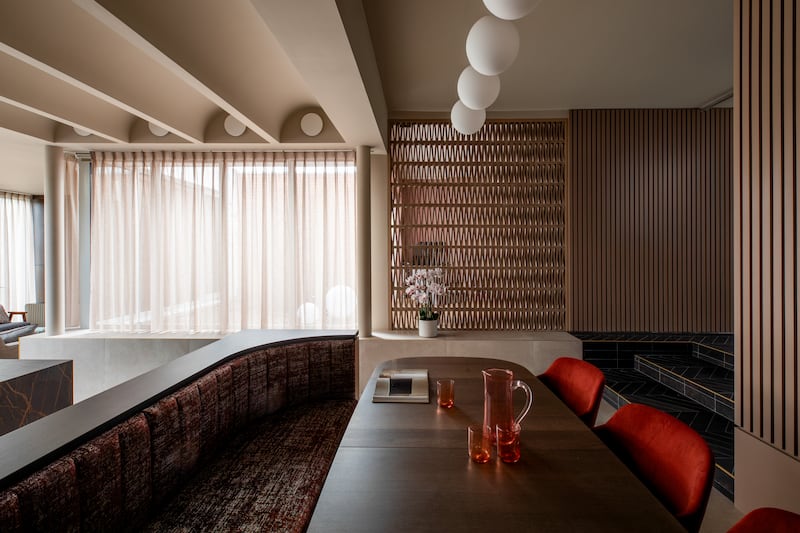
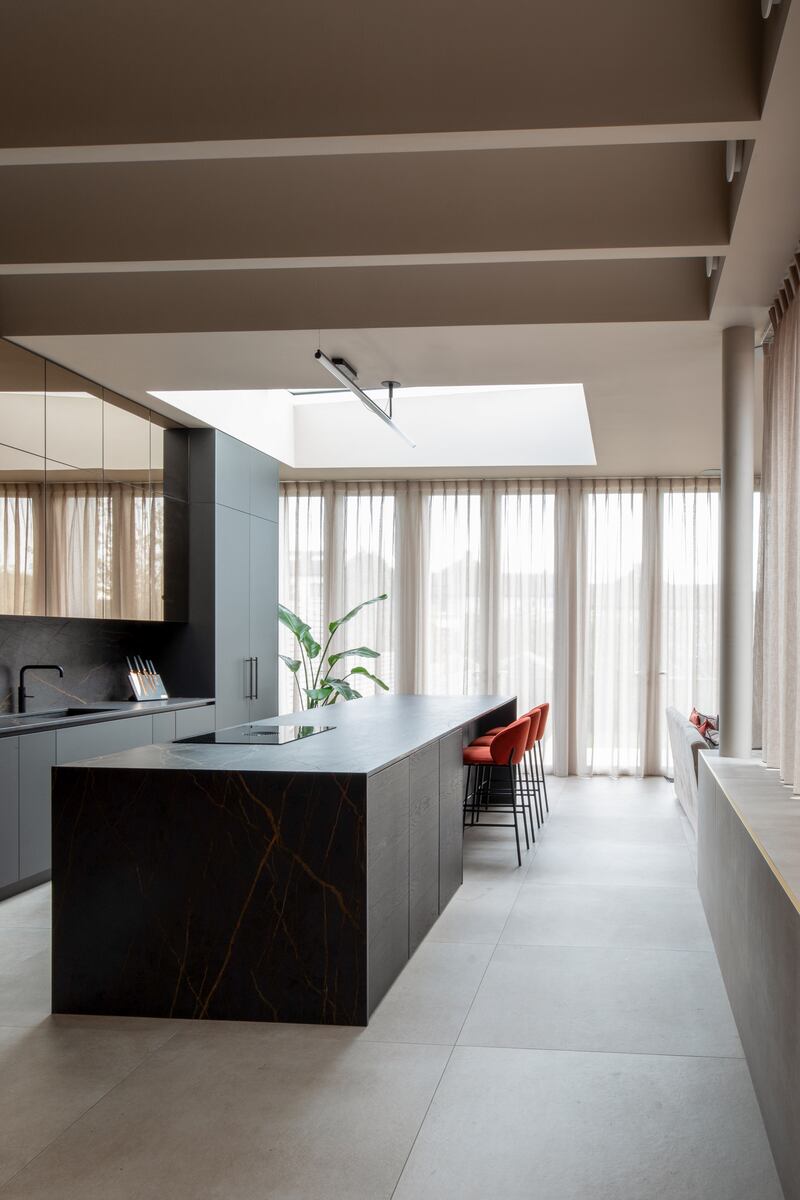
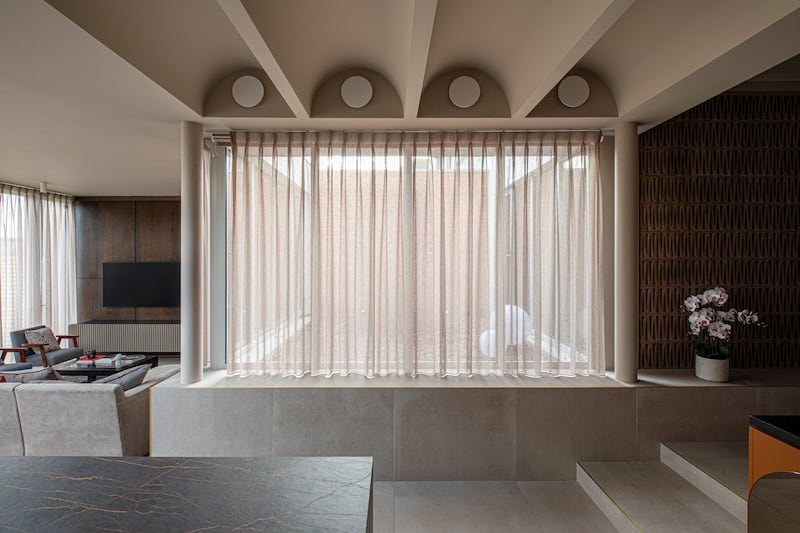
The extension into the garden more than doubles the size of the house, which was originally 110sq m. Nevertheless, they have no intention of filling it with possessions. “The last house we lived in was quite small and when we were moving out we realised how much we had accumulated over the years,” says McEvoy. “Now it’s really easy to keep it tidy.” The doors to the utility room, bathroom and livingroom are all hidden behind panelling, fitted by Oakheart & Co. The pantry hides the toaster and kettle while the oven and microwave are under the counter.
Boyle wanted a kitchen that looked timeless “and doesn’t need to be reinvented with every fad”. Designed by Dean Cooper & Company, the island of more than four metres long is perfect for entertaining, and, despite the generous seating area, the guests still congregate in the kitchen. The copper colour running through the Dekton island is picked up in the copper-tinted mirrors around the kitchen and living area.
Upstairs they incorporated the fourth bedroom into the main bedroom, allowing for an luxurious en suite that’s flooded with light thanks to the rooflight over the bath. “That’s my favourite room in the house,” says McEvoy. He works from home and finds himself gravitating towards the kitchen where the east-facing garden means it’s warm all morning, even during winter.
They bucked the trend for unadorned patio doors by adding light and delicate voile curtains for privacy. Boyle says they love the feeling the curtains give to the room. “It gives a bit of softness and it almost feels cold now when you open them back.”
The refurbishment and insulation, combined with the heat pump has brought the Ber from E to A2. “The heat pump was expensive to buy and set up, but I think it’s well worth it, for sure,” says McEvoy. That brings us to the budget. “We probably built at the worst time possible with Brexit and Covid, and steel prices were going through the roof,” says Boyle. “There were lots of hairy moments when we said we may not be able to finish this given the escalating costs but we always found a way of getting things done.”
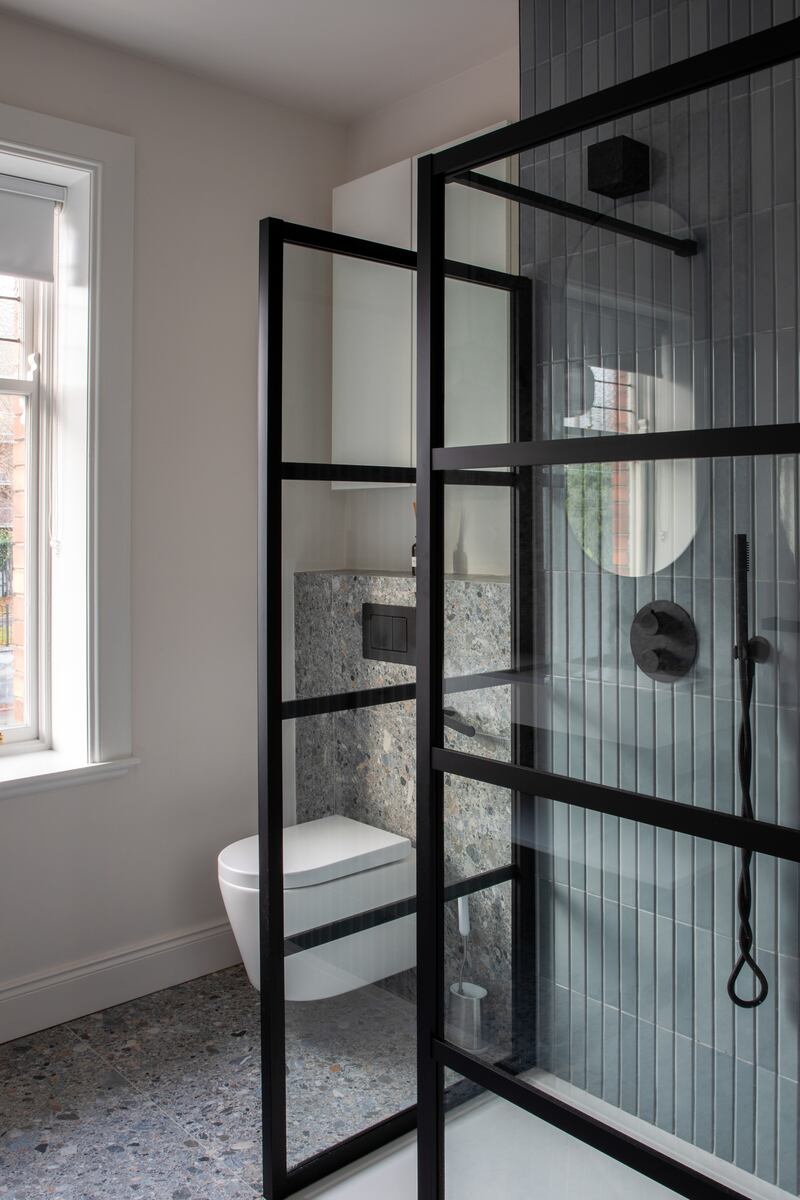
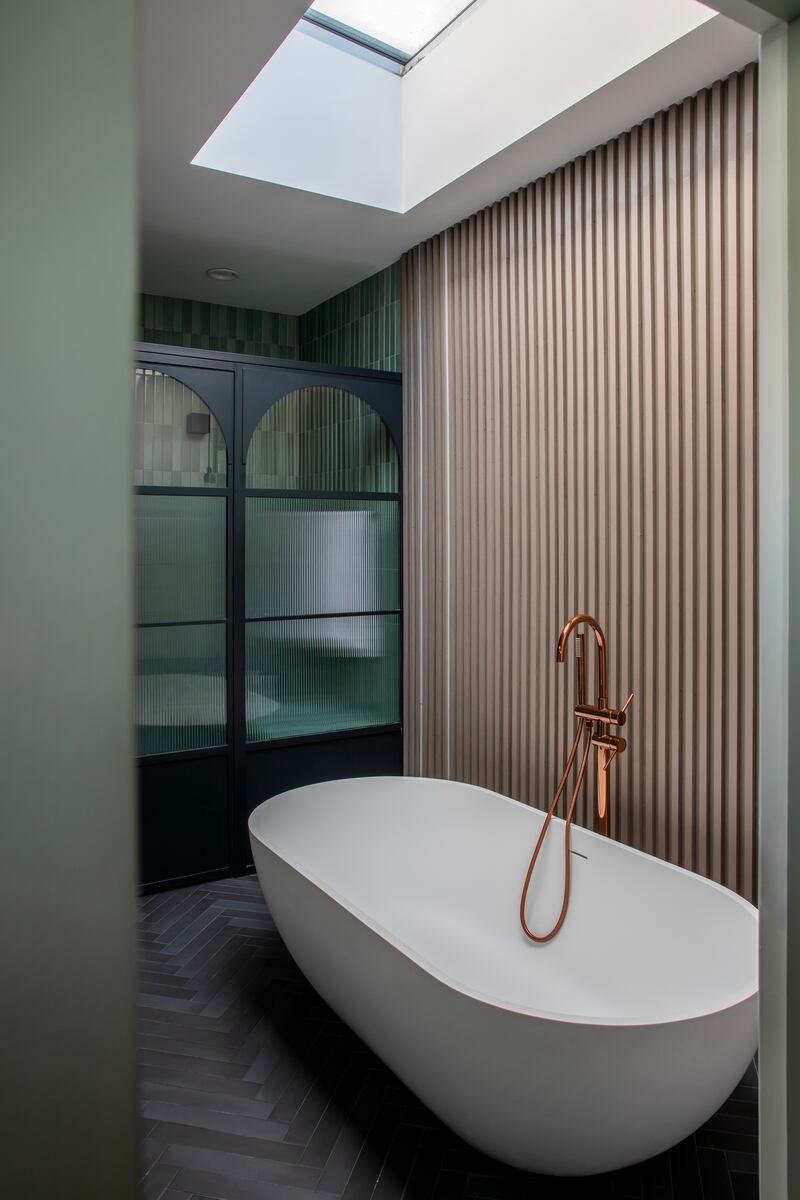
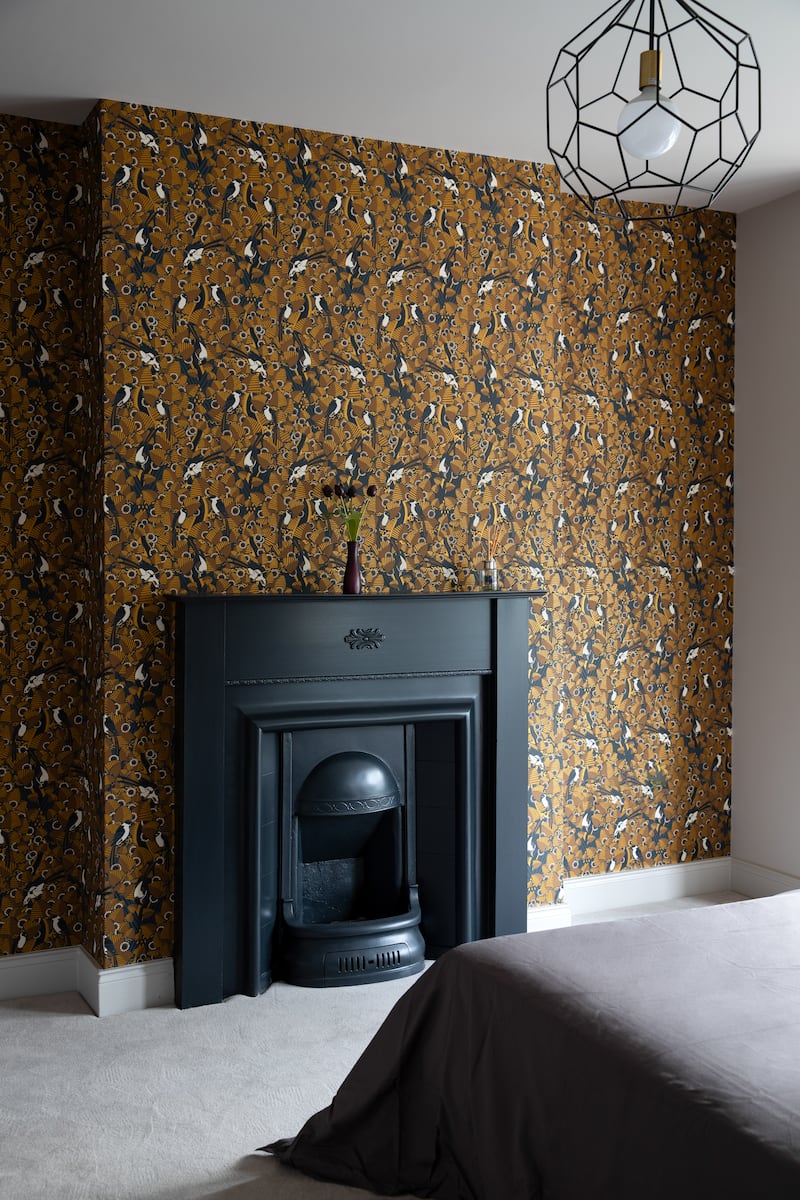
They went about 10-15 per cent over budget, but that was mostly down to their decision to add certain extras. “One thing I didn’t want to do was to regret not doing something in the future,” says Boyle. “We wanted to get as much done as possible at the first attempt.”
So what would they advise others who are facing a similar project. “Get a good architect,” says Boyle. “I had followed their [ODKM’s] work for a while and really liked what they’d done on previous projects. We just seemed to gel.”
McEvoy says a quantity surveyor pays for itself in the long run. “It’s really worth the investment because he negotiated in a way that we wouldn’t have been able to do. And if you can afford it, get a project manager too. We managed it ourselves but it’s a lot. You have to be so decisive because there’s not a lot of time to think about stuff.”
But above all, Boyle recommends monitoring the budget. “Know when you are deviating from it. It’s very easy to get drawn into the world of: ‘Doesn’t that look amazing?’ We could have spent double or treble on the house if we allowed ourselves to get drawn into that.”
Biggest win
“We have our dream house,” says Boyle. “I just love the open nature of it and the mix of the old and new.”
Biggest mistake
“When we were putting the terrace in (paved area in the garden), the house was a total mess because we don’t have side access,” says McEvoy. “We still have to do the garden, so we’ll have to go through that again. Ideally we should have done the garden at the same time, but the budget just didn’t stretch to it.”
- Sign up for push alerts and have the best news, analysis and comment delivered directly to your phone
- Find The Irish Times on WhatsApp and stay up to date
- Listen to our Inside Politics podcast for the best political chat and analysis











